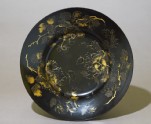Room 37 | Japan 1600-1850 gallery
Discover the arts of the Edo period (1600-1868) from porcelain to lacquer to painting.
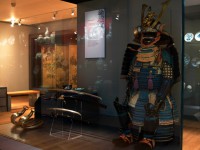
‘Fine and Curious’: the beginnings of the European export trade
Although Japan had long traded with its Asian neighbours, the first European traders to reach Japan were Portuguese merchants in the mid-1500s, seeking precious metals and exotic luxury goods, such as lacquer.
Within a century, however, the Dutch East India Company had come to dominate the Europe-Asia trade. The Company bought spices, silk, cotton and Chinese porcelain. When civil war in China disrupted Chinese porcelain production in the 1640s, Dutch merchants looked to Japan instead, for porcelain that was ‘fine and curious’.
Arita porcelain with underglaze blue decoration
 Bottle with wisteria (EA2003.67)
Bottle with wisteria (EA2003.67)
 Bottle in the Chinese 'transitional style' with figures in a landscape (EA2003.15.a)
Bottle in the Chinese 'transitional style' with figures in a landscape (EA2003.15.a)
 Bottle in the Chinese 'transitional style' with figures and bottle-brush trees (EA2003.15.b)
Bottle in the Chinese 'transitional style' with figures and bottle-brush trees (EA2003.15.b)
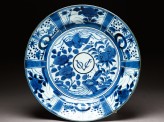 Plate with Dutch East India Company monogram (EA1976.53)
Plate with Dutch East India Company monogram (EA1976.53)
 Ewer in the style of Near Eastern metalwork (EA1978.696)
Ewer in the style of Near Eastern metalwork (EA1978.696)
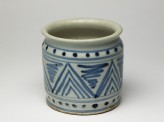 Albarello in the form of Delft ware (EA2002.22)
Albarello in the form of Delft ware (EA2002.22)
 Jar with figures in a landscape (EA1978.701)
Jar with figures in a landscape (EA1978.701)
 Mustard pot of Delft form (EA1978.821)
Mustard pot of Delft form (EA1978.821)
 Bottle with stylized snowflakes (EA1978.767)
Bottle with stylized snowflakes (EA1978.767)
Export lacquer and Arita porcelain
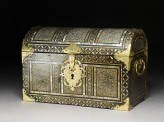 Nanban-style lacquered coffer (EA1985.53)
Nanban-style lacquered coffer (EA1985.53)
 Kendi with moulded decoration (EA1978.1094)
Kendi with moulded decoration (EA1978.1094)
 Mug of European form with dragons, flowers, and birds (EA2001.7)
Mug of European form with dragons, flowers, and birds (EA2001.7)
Underglaze blue and early enamelled porcelain
The first Japanese porcelains to be exported to Europe were imitations of popular blue-and-white Chinese styles. These included the ‘Transitional’ style, with tree-filled landscapes and tall figures, and the ‘Kraak’ style, with panelled decoration around a central design. Colourful enamelled wares, unlike anything made in China, were also in great demand in Europe from the very beginning of the export trade.
Notice
Objects may have since been removed or replaced from a gallery. Click into an individual object record to confirm whether or not an object is currently on display. Our object location data is usually updated on a monthly basis, so contact the Jameel Study Centre if you are planning to visit the museum to see a particular Eastern Art object.
© 2013 University of Oxford - Ashmolean Museum






